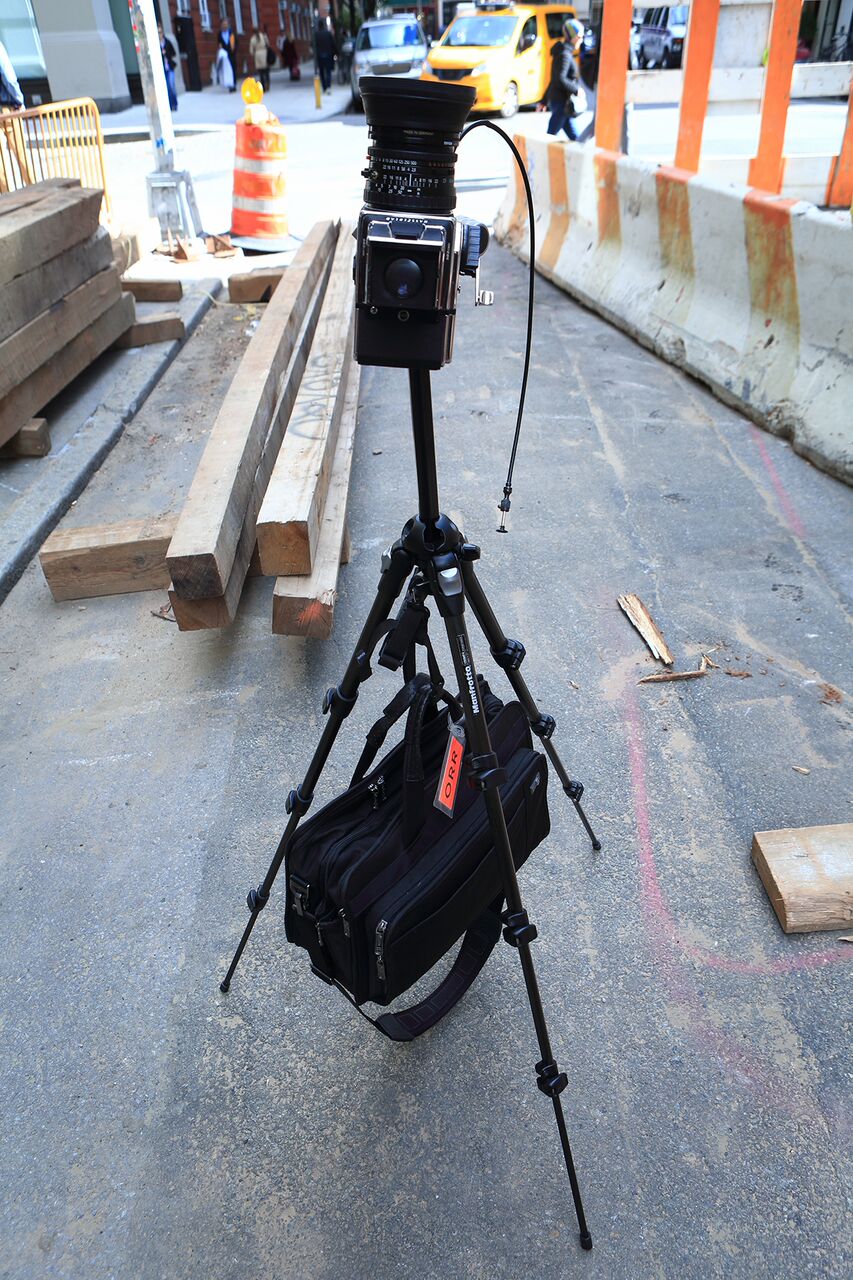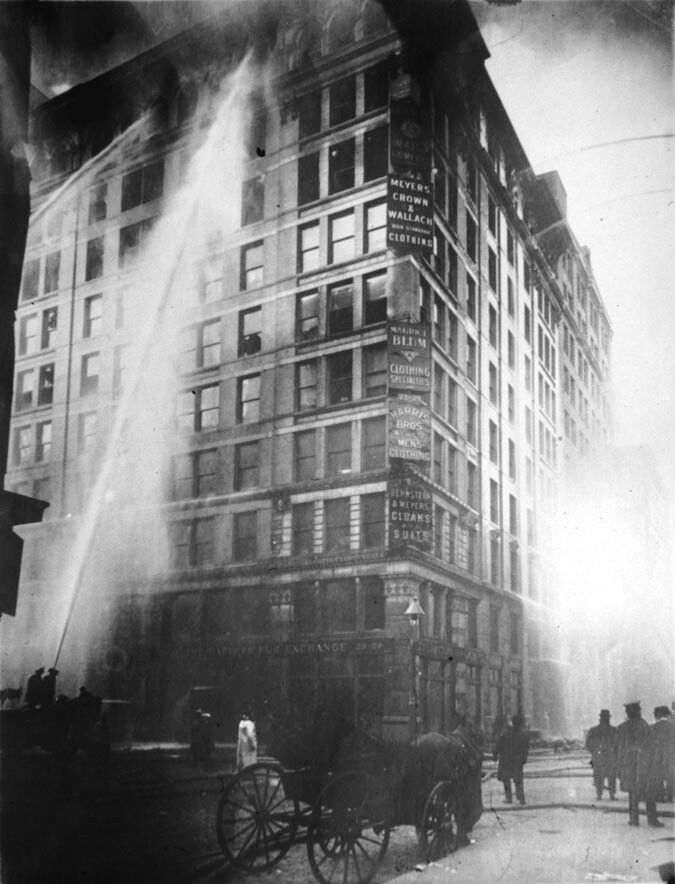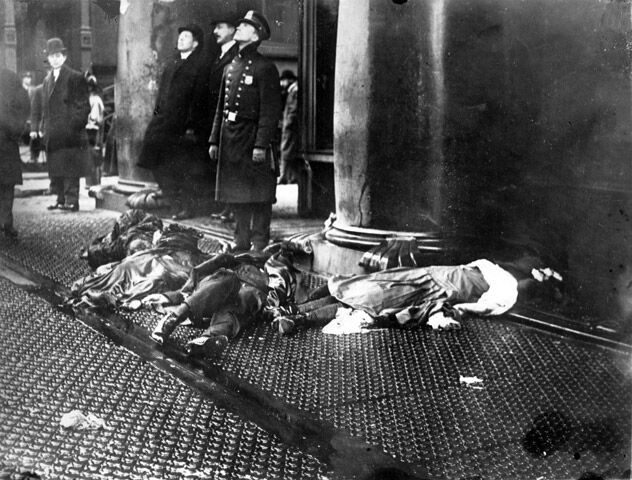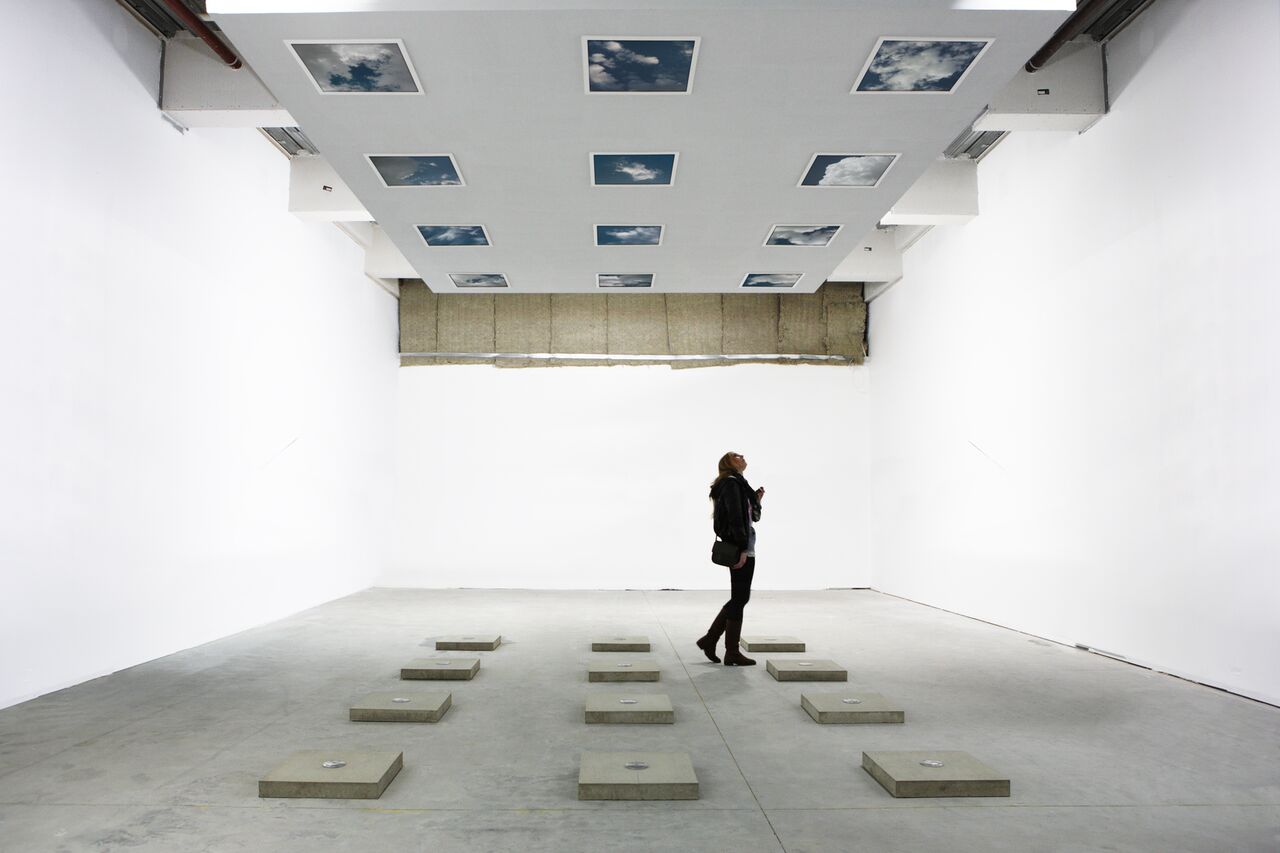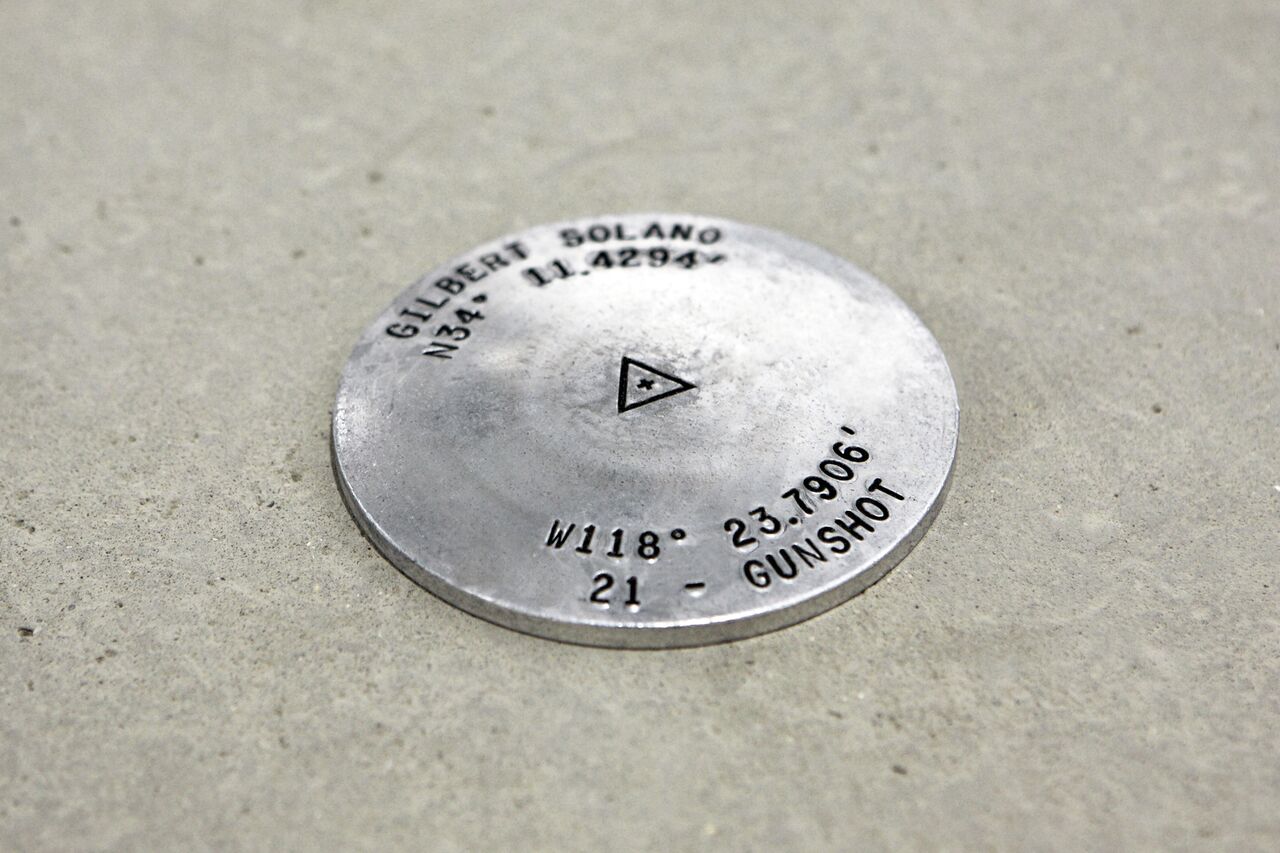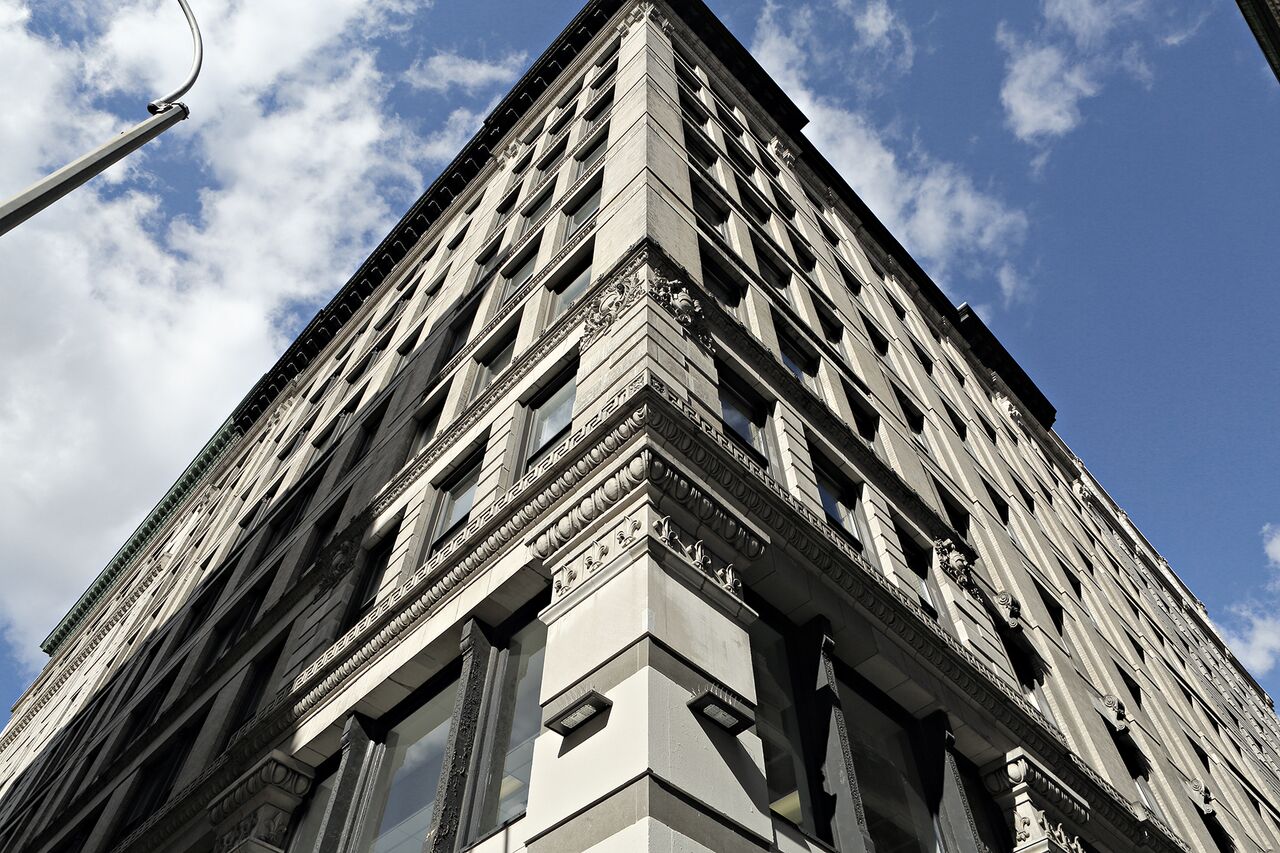“The most popular use of the photograph
is as a memento of the absent.”
— John Berger
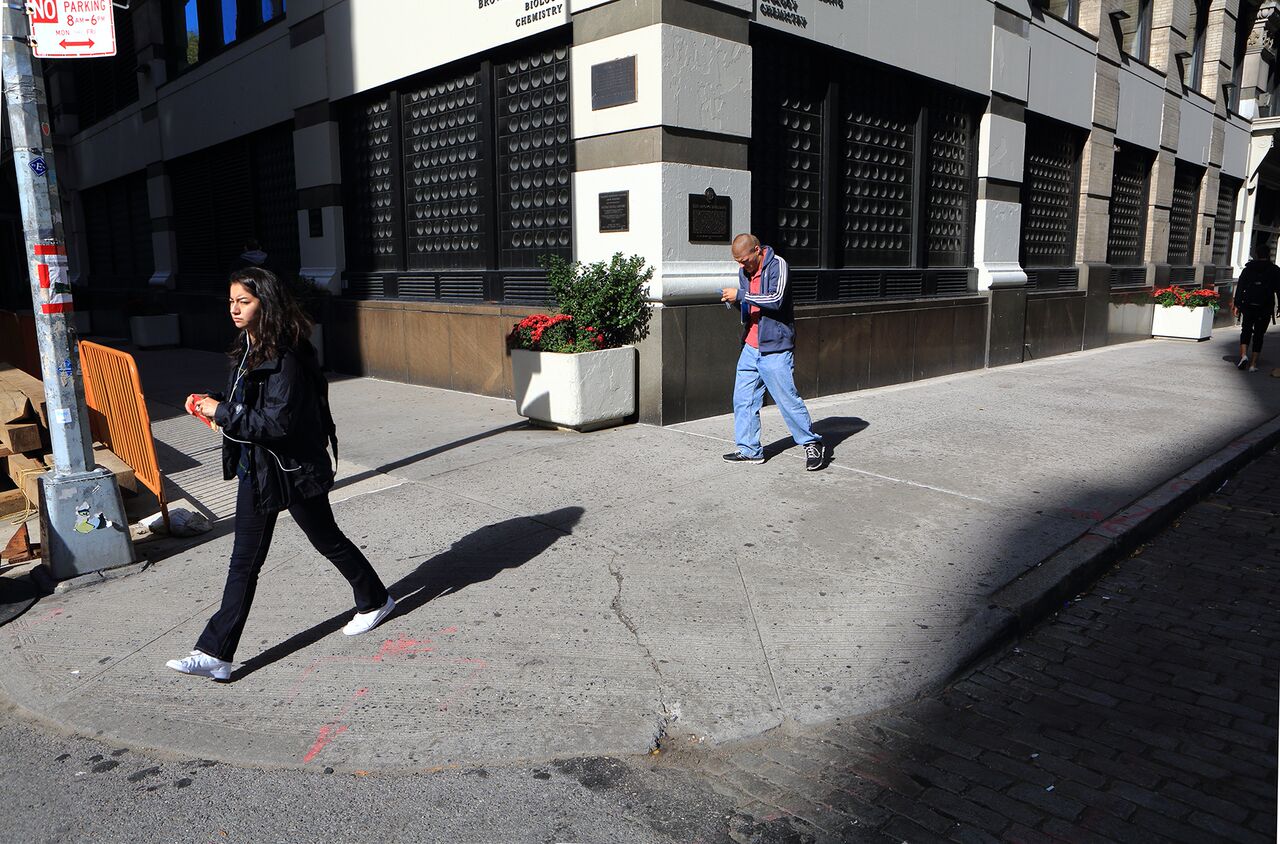
“Can I help you?”
That sentence, always a preamble to being thrown out of a place I’m not supposed to be, is one I’ve been half expecting all morning.
A construction worker who’s wearing so much orange that I’ve nicknamed him ‘Julius’ (in reference to the once-ubiquitous Orange Julius stands that used to be in every mall), is orbiting me from a distance. I think he doesn’t realize how much the eye-watering color (and the amount of it) makes him stand out. Bright orange vest. Bright orange flag. And, in a very stylish touch, bright orange Adidas sneakers. I’d like to think he’s simply admiring the Da-Glo orange tags on my equipment bags — I share a love of orange — but I’m wary.
He’s been clocking me ever since I arrived at the intersection of Greene Street and Washington Place, a couple hours ago.
The street and sidewalk have been blocked off for repair, and as I said above, I’m trespassing. Conspicuously so: I have a medium-format camera, mounted to a tripod with the lens pointing straight up, which I’ve been moving around the block. I’m using an old-fashioned cable release, so my old-school Hasselblad sounds like a mousetrap when it goes off. Subtlety is not part of my M.O.
For the most part, Julius has contented himself with keeping an eye on me, as he does his work. I just keep on shooting, taking his lack of approach as tacit permission to continue. I hope to net nearly 150 unique images from these streets and sidewalks.
At one point, I look up from my viewfinder and there he is, standing next to me.
“Can I help you.”
I shrug: “Oh, I’m good. Just grabbing shots.” I point up:
“What’s up?”
“Clouds.”
“For real?”
“Yep.”
“Listen, man. I’m sorry, but—”
I’m saved by a horn blast – a LOUD one – from a dump truck. The honk is for Julius — the driver is yelling that he needs to be guided in — and the truck starts beeping as it slowly backs down Greene Street. Julius unfurls his orange flag, saying:
“Just…stay on the sidewalk, alright?”
A bit of luck. And, more importantly, more time to shoot.
A follow-up question might have included asking why I intentionally sought this particular corner to photograph clouds. It is frames by buildings and a couple trees. Washington Square Park, with its almost entirely unobstructed views of the sky — is only a half-block away.
But then, I wouldn’t be memorializing the 146 people who died here.
• • •
Over the past nine years, I’ve traveled to the locations of people’s violent deaths, and photographed the sky above.
The series title is All That Is Solid Melts Into Air.
I’ve chosen to document only the skies because they are an element common to every location, yet exist at a remove from ‘concrete’ demarcations. The skies will still be here long after structures, landmarks and addresses have become altered or disappeared entirely. What I’ve photograph will never be the same sky as when the death occurred (much like the section of river where someone has drowned); and that is an essential point of the series. Something happened, but the world moves (and has moved) on. Nature is oblivious to our predicaments, unconcerned with the ‘rightness or wrongness’ of events.
As Heraclitus (from whom I borrow the river metaphor above) so elegantly put it: “There is nothing permanent except change.”
This project has taken me to both dangerous areas well-known for high mortality rates and quiet neighborhoods generally considered safe. Some of these places were obviously threatening, others were stunningly beautiful. Most often they were nondescript places, with nothing to distinguish them as the site of a tragic occurrence. Like this Greenwich Village block. It’s the site of a horrific tragedy. If you look on the building walls, you’ll find a plaque (ignored by most passerby) identifying this building, now part of the NYU campus, as the former address of the Triangle Shirtwaist Company.
On March 25th, 1911, 123 women and 23 men died here when a fire broke out. The owners had locked exit doors, to discourage workers from taking breaks. Most of those who died did so after jumping from the 8th, 9th and 10th floor windows to avoid the heat and flames. Those who wouldn’t or couldn’t jump died inside, trapped on the factory floor.
The descriptions are graphic and vivid. A witness, Louis Waldman, recalls seeing “girl after girl appear at the reddened windows, pause for a terrified moment, and then leap to the pavement below, to land as mangled, bloody pulp. This went on for what seemed a ghastly eternity. Occasionally a girl who had hesitated too long was licked by pursuing flames and, screaming with clothing and hair ablaze, plunged like a living torch to the street. Life nets held by the firemen were torn by the impact of the falling bodies. The emotions of the crowd were indescribable. Women were hysterical, scores fainted; men wept as, in paroxysms of frenzy, they hurled themselves against the police lines.”
A reporter said: “I learned a new sound that day, a sound more horrible than description can picture — the thud of a speeding living body on a stone sidewalk.”
Triangle Shirtwaist is considered to this day to be one of the worst industrial disasters in US history. Its impact on the public in 1911 was as profound as the World Trade Center attack was ninety years later. But the cause of the 1911 tragedy was not an enemy ideology or attack; it was simple, careless greed. And it became a driving force behind the growth and resolve of unions in New York City, then the United States.
• • •
 The dump truck has unloaded, and roars away. Julius is heading back to me, but his body language is more casual than before.
The dump truck has unloaded, and roars away. Julius is heading back to me, but his body language is more casual than before.
“So, why clouds, man?”
I actually decide to just tell him. I point out the plaque.
Then (because he asked) I show him documentation of some of my previous installations on my iPhone.
When I exhibit the series, the photographs are mounted overhead (the angle of capture) with pertinent information (name, age, cause of death, GPS coordinates) engraved in survey markers embedded directly below the corresponding image.
Basically, a cenotaph. But it also happens to function as a kind of chapel, a subjective ‘Rorschach Test’ for belief systems:
“As you can see — they’re all at peace now…” (priest).
“As you can see — there’s nothing!” (atheist).
“As you can see — all is interconnected.” (Buddhist).
Interestingly, science simultaneously backs up the Buddhist view even as it indicates that these images may actually be more representative than they initially seem. On a molecular level, elements which brushed against and passed through our matter will still exist in the world after we’ve gone.
Neil DeGrasse Tyson put it so:
“There are more molecules of water in a cup of water than cups of water in all the world’s oceans. This means that some molecules in every cup of water you drink passed through the kidneys of Genghis Khan, Napoleon, Abe Lincoln or any other historical person of your choosing.”
“The same goes for air: there are more molecules of air in a single breath of air than there are breaths of air in Earth’s entire atmosphere. Therefore, some molecules of air you inhale passed through the lungs of Billy the Kid, Joan of Arc, Beethoven, Socrates or any other historical person of your choosing.”
It stands to reason, then, that my images of skies and clouds (air + water) have captured a tiny bit of matter that has brushed by everyone. As the Baghavad Gita says: “They live in wisdom who see themselves in all and all in them.”
• • •
To my happy surprise, Julius is into it. And has become an ally. He lets me shoot well into the afternoon. And asks a lot of questions. Good ones. Sometimes after I answer, he’ll wander back to the worksite, then come back, asking a followup, like:
“What the hell made you start doing this?”
It’s a long story, Julius.
The original concept for this project emerged as I reflected on the site of a Japanese-run concentration camp in Indonesia, the Djakarta camp. My mother was a prisoner there from ages 8 through 12, and was among those scheduled to be marched into quicksand as the war wound down and supplies ran low. The camp officials simply couldn’t afford the supplies to feed them or the bullets to shoot them. According to camp records, had the 2nd atomic bomb not been dropped on Nagasaki (prompting immediate surrender in this area of the Pacific), she and everyone else would have been executed, and I wouldn’t be writing this.
So, it’s a place with significant meaning to me, and one to which I have often thought of making a pilgrimage.
Except, it isn’t really there anymore.
Unlike the European death camps (particularly the infamous Polish ones), or former Rwandan churches (where victims were lead to their deaths by the nuns and priests), Most of these Indonesian camps have disintegrated with neglect. And, unlike NYU, the Indonesians didn’t put up plaques. Many of those locations are now nondescript, reclaimed by the jungle. Which underlined to me how landscape is undergoing continual change.
I began to apply the idea to local deaths in Los Angeles, then in other places I’d travelled. My method in learning of these locations has, of course, shaped the content. Death from natural causes is rarely reported, excepting cases of celebrity or political power. Most of the incidents I become aware of have an extraordinary component. In any large city, someone having a fatal heart attack really isn’t news; that person then crashing the private plane they were piloting into a residential neighborhood is.
So, most of the stories I become aware of are heightened ones. And that factor becomes part of the way a viewer processes the image of the cloud I’ve made.
• • •
Interestingly, there is a long history of clouds being used to communicate intense emotion, expressionistic power, and the ineffable. Modernist photographer Alfred Stieglitz used clouds as a way of communicating purely abstract form and emotion in his Equivalents series, although he became coy when pressed whether or not he meant to represent divinity:
“Some feel I have photographed God,” he wrote to Hart Crane in 1923, adding: “maybe.”
Master landscape painter John Constable (1776-1837), stranded in unfamiliar countryside with his beloved wife Maria (they’d moved outside London for her health as she succumbed to tuberculosis), began ‘skying’ – painting studies of the skies above Hampstead Heath. None of these were exhibited while he was alive; all are prized by collectors now. Though Constable took a thorough, empirical approach (noting time, weather, time of year, type of cloud; these dramatic vistas have always been thought of as representations of intense emotion. Constable then applied this skill and the subtext to his landscapes. Using the textures of the skies to comment on and shape the viewer’s impression of the vistas depicted. The Metropolitan Museum of Art notes: “landscapes from the time of his wife’s death feature dark, turbulent skies that carry the brunt of the works’ emotional weight.”
The late, indispensible art critic John Berger, in his seminal Ways of Seeing, created a powerfully simple exercise to demonstrate the impact of this kind of context, using Van Gogh’s Wheatfield with Crows. First, Berger shows the painting. Then, this sentence: “This is the last painting Van Gogh made before he killed himself.”
Then Berger shows the painting again.
He then says: “It is hard to define exactly how the words have changed the image, but undoubtedly they have.”
“The image now illustrates the sentence.”
• • •
All That Is Solid Melts Into Air represents myriad things: Individual portraits of absence. An expressionistic link to a tragic occurrence. An investigation of the overt correlation between a photograph and its context. An angle of view perhaps in line with the last perspective of a person leaving this world. A Memento Mori. Collectively, a signifier of the world beyond reason.
Look up, and you will see it all yourself.
• • •
My intent is that the images I photographed in October of 2015 will illustrate the following 146-part sentence, written 106 years ago today, and now part of the book of the universe:

Altman, Anna, 16
Ardito, Annina, 25
Bassino, Rose, 31
Benanti, Vincenza, 22
Berger, Yetta, 18
Bernstein, Essie, 19
Bernstein, Jacob, 38
Bernstein, Morris, 19
Billota, Vincenza, 16
Binowitz, Abraham, 30
Birman, Gussie, 22
Brenman, Rosie, 23
Brenman, Sarah, 17
Brodsky, Ida, 15
Brodsky, Sarah, 21
Brucks, Ada, 18
Brunetti, Laura, 17
Cammarata, Josephine, 17
Caputo, Francesca, 17
Carlisi, Josephine, 31
Caruso, Albina, 20
Ciminello, Annie, 36
Cirrito, Rosina, 18
Cohen, Anna, 25
Colletti, Annie, 30
Cooper, Sarah, 16

Dashefsky, Bessie, 25
Del Castillo, Josie, 21
Dockman, Clara, 19
Donick, Kalman, 24
Driansky, Nettie, 21
Eisenberg, Celia, 17
Evans, Dora, 18
Feibisch, Rebecca, 20
Fichtenholtz, Yetta, 18
Fitze, Daisy Lopez, 26
Floresta, Mary, 26
Florin, Max, 23
Franco, Jenne, 16
Friedman, Rose, 18
Gerjuoy, Diana, 18
Gerstein, Molly, 17
Giannattasio, Catherine, 22
Gitlin, Celia, 17
Goldstein, Esther, 20
Goldstein, Lena, 22
Goldstein, Mary, 18
Goldstein, Yetta, 20
Grasso, Rosie, 16
Greb, Bertha, 25
Grossman, Rachel, 18
Herman, Mary, 40
Hochfeld, Esther, 21
Hollander, Fannie, 18
Horowitz, Pauline, 19
Jukofsky, Ida, 19
Kanowitz, Ida, 18

Kessler, Beckie, 19
Klein, Jacob, 23
Koppelman, Beckie, 16
Kula, Bertha, 19
Kupferschmidt, Tillie, 16
Kurtz, Benjamin, 19

Lansner, Fannie, 21
Lauletti, Maria Giuseppa, 33
Lederman, Jennie, 21

Lehrer, Sam, 19
Leone, Kate, 14
Leventhal, Mary, 22
Levin, Jennie, 19
Levine, Pauline, 19
Liebowitz, Nettie, 23
Liermark, Rose, 19
Maiale, Bettina, 18
Maiale, Frances, 21
Maltese, Catherine, 39
Maltese, Lucia, 20
Maltese, Rosaria, 14
Manaria, Maria, 27
Mankofsky, Rose, 22

Meyers, Yetta, 19
Midolo, Gaetana, 16

Neubauer, Beckie, 19
Nicholas, Annie, 18
Nicolosi, Michelina, 21
Nussbaum, Sadie, 18
Oberstein, Julia, 19
Oringer, Rose, 19
Ostrovsky , Beckie, 20
Pack, Annie, 18
Panno, Provindenza, 43
Pasqualicchio, Antonietta, 16
Pearl, Ida, 20
Pildescu, Jennie, 18
Pinelli, Vincenza, 30

Prestifilippo, Concetta, 22
Reines, Beckie, 18
Rosen (Loeb), Louis, 33
Rosen, Fannie, 21
Rosen, Israel, 17
Rosen, Julia, 35
Rosenbaum, Yetta, 22
Rosenberg, Jennie, 21
Rosenfeld, Gussie, 22
Rothstein, Emma, 22
Rotner, Theodore, 22
Sabasowitz, Sarah, 17
Salemi, Santina, 24
Saracino, Sarafina, 25
Saracino, Teresina, 20

Schmidt, Theresa, 32
Schneider, Ethel, 20
Schochet, Violet, 21
Schpunt, Golda, 19
Schwartz, Margaret, 24
Seltzer, Jacob, 33
Shapiro, Rosie, 17
Sklover, Ben, 25
Sorkin, Rose, 18
Starr, Annie, 30
Stein, Jennie, 18
Stellino, Jennie, 16
Stiglitz, Jennie, 22
Taback, Sam, 20

Tortorelli, Isabella, 17
Utal, Meyer, 23
Uzzo, Catherine, 22
Velakofsky, Frieda, 20
Viviano, Bessie, 15
Weiner, Rosie, 20
Weintraub, Sarah, 17
Weisner, Tessie, 21
Welfowitz, Dora, 21
Wendroff, Bertha, 18
Wilson, Joseph, 22
Wisotsky, Sonia, 17
David Orr is a visual artist based in Los Angeles. His work has been shown extensively in the United States and internationally, and is in public collections among such artists as Ansel Adams, John Baldessari, Jim Dine, David Hockney, The Brothers Quay, Edward Weston, and Joel-Peter Witkin.
All That Is Solid Melts Into Air is an ongoing project; as of this writing over 300 locations have been photographed worldwide.

